Forgot MySQL password! ? Don't panic~
mysql tutorial column will help you solve the problem of forgetting your MySQL password.
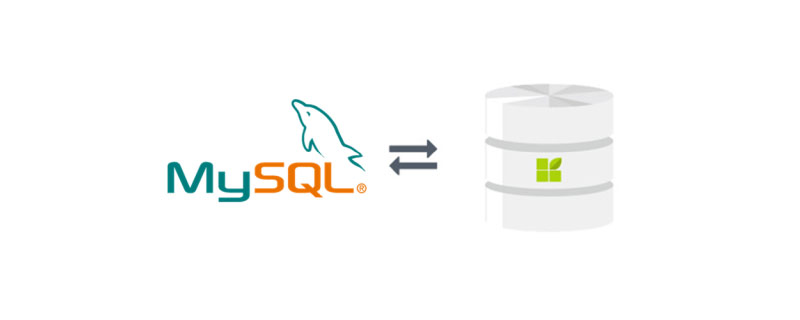
After installing MySQL or when using MySQL, the most embarrassing thing is to forget the password. Murphy's Law also tells us that if something If something can go wrong, it will go wrong. So what should we do if we accidentally forget the MySQL password? Don't worry, this article will teach you how to do it.
1. Modify the MySQL configuration file
First we need to open the MySQL configuration file. If it is a Windows system, the MySQL configuration file is my.ini, which is in the default installation directory of MySQL. ; If it is a MacOS system, the configuration file name is my.cnf, and its path is /etc/my.cnf.
Taking MacOS as an example, we need to add "skip-grant-tables" after [mysqld] in the configuration file, which means to set up skip permission verification , as shown in the following figure: 
MacOS can directly use the "sudo vim /etc/my.cnf" command to edit the configuration file.
Notes
If you cannot find the MySQL configuration file in MacOS, you can create my.cnf directly in the /etc directory and add the following content:
[client] default-character-set=utf8
[mysqld] bind-address = 127.0.0.1 character-set-server=utf8 skip-grant-tables
Of course, if there are other configuration items, you can also modify them yourself.
2. Restart MySQL
After modifying the configuration file, we need to restart the MySQL service for the configuration to take effect.
If it is a Windows system, we can shut down and then start MySQL. The execution command is as follows:
net stop mysql net start mysql
If it is a Linux system, you can directly use the command to restart:
service mysql restart
If it is a Mac system, you can Restart the operation through the interface, as shown in the following figure: 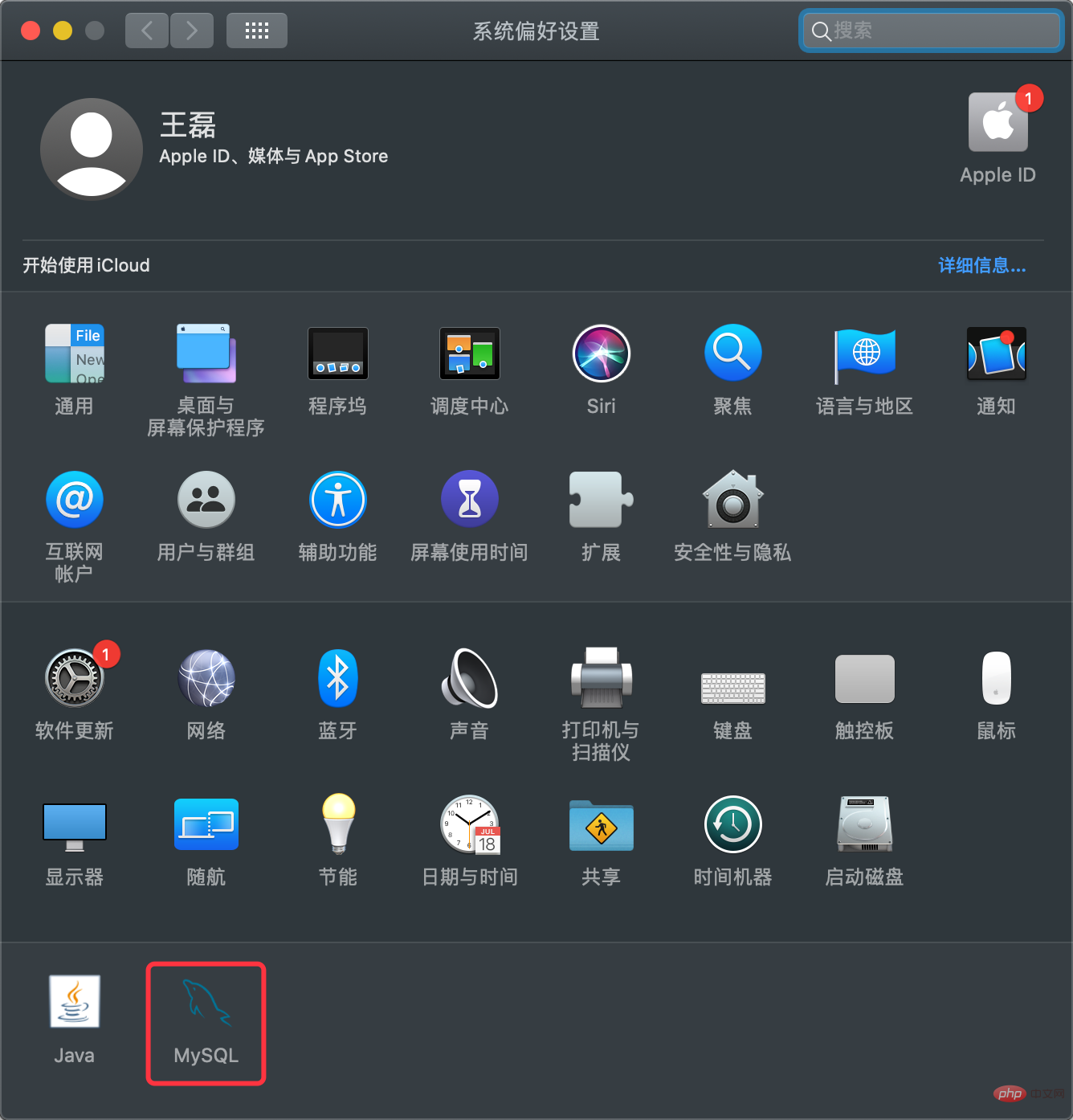
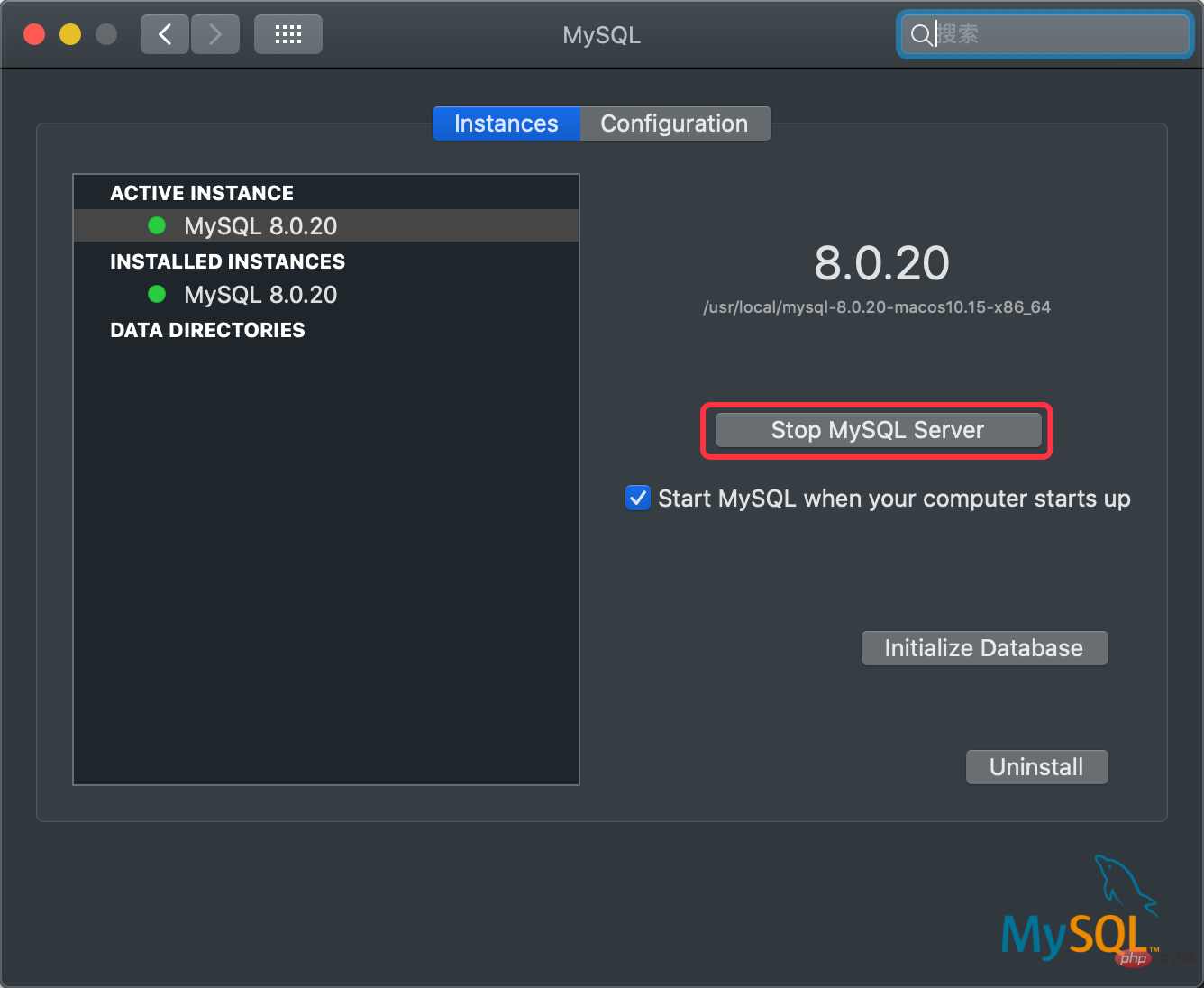
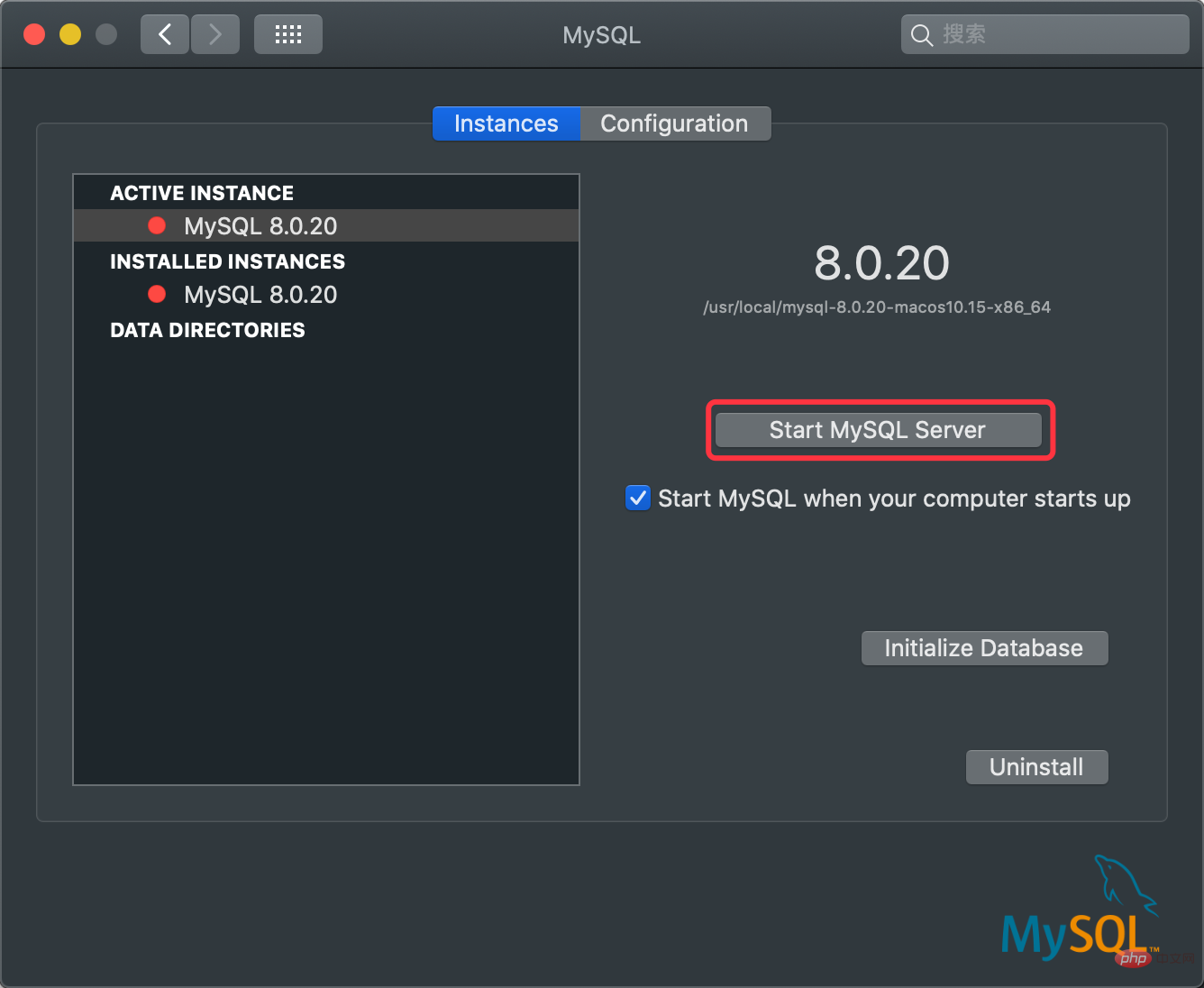
3. Set a new password
After restarting the service, we can set up MySQL through the command line tool New password, first we enter the "mysql -u root -p" command to connect to the MySQL server. When the password input box appears, just hit Enter to log in , as shown in the following figure: 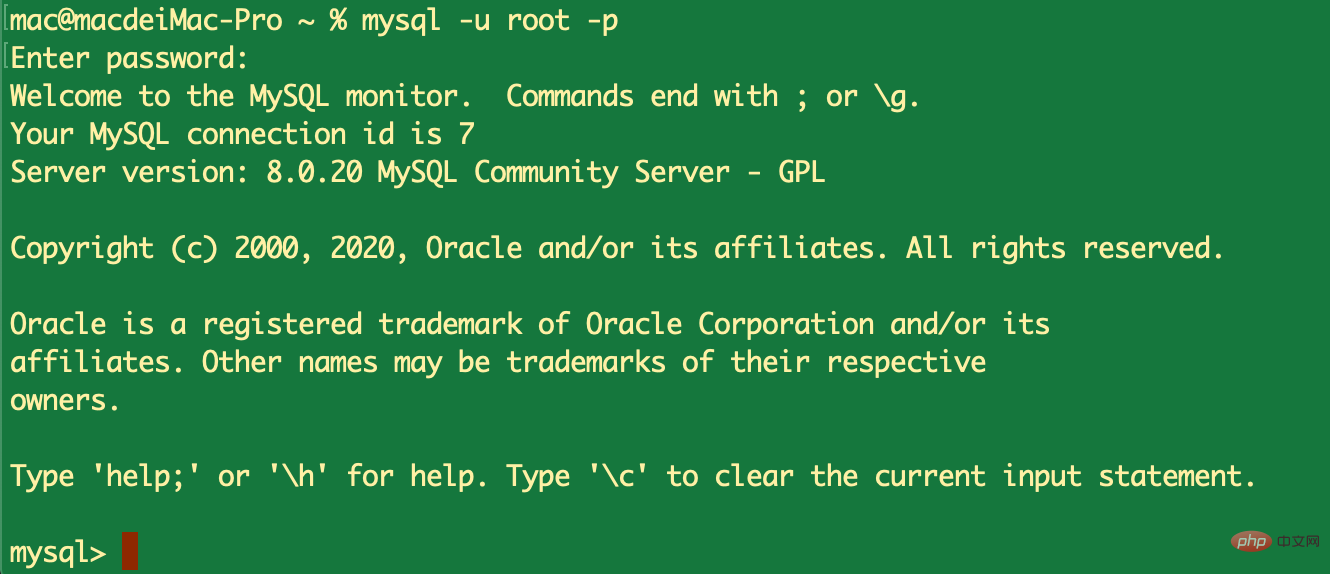
Next we use the following command to set a new password:
update user set password=password('new password') where user='root'; flush privileges; quit
Note
If ERROR 1290 (HY000) occurs when performing this step: The MySQL server is running with the --skip-grant-tables option so it cannot execute this statement error. You need to execute the flush privileges command first, and then execute other commands.
Finally
After we set the new password, remember to remove "skip-grant-tables" (skip permission verification) in the MySQL configuration file, and then restart the MySQL service It can be used normally.
More related free learning recommendations: mysql tutorial(Video)
The above is the detailed content of Forgot MySQL password! ? Don't panic~. For more information, please follow other related articles on the PHP Chinese website!

Hot AI Tools

Undresser.AI Undress
AI-powered app for creating realistic nude photos

AI Clothes Remover
Online AI tool for removing clothes from photos.

Undress AI Tool
Undress images for free

Clothoff.io
AI clothes remover

Video Face Swap
Swap faces in any video effortlessly with our completely free AI face swap tool!

Hot Article

Hot Tools

Notepad++7.3.1
Easy-to-use and free code editor

SublimeText3 Chinese version
Chinese version, very easy to use

Zend Studio 13.0.1
Powerful PHP integrated development environment

Dreamweaver CS6
Visual web development tools

SublimeText3 Mac version
God-level code editing software (SublimeText3)

Hot Topics
 1662
1662
 14
14
 1418
1418
 52
52
 1311
1311
 25
25
 1261
1261
 29
29
 1234
1234
 24
24
 MySQL's Role: Databases in Web Applications
Apr 17, 2025 am 12:23 AM
MySQL's Role: Databases in Web Applications
Apr 17, 2025 am 12:23 AM
The main role of MySQL in web applications is to store and manage data. 1.MySQL efficiently processes user information, product catalogs, transaction records and other data. 2. Through SQL query, developers can extract information from the database to generate dynamic content. 3.MySQL works based on the client-server model to ensure acceptable query speed.
 How to start mysql by docker
Apr 15, 2025 pm 12:09 PM
How to start mysql by docker
Apr 15, 2025 pm 12:09 PM
The process of starting MySQL in Docker consists of the following steps: Pull the MySQL image to create and start the container, set the root user password, and map the port verification connection Create the database and the user grants all permissions to the database
 Laravel Introduction Example
Apr 18, 2025 pm 12:45 PM
Laravel Introduction Example
Apr 18, 2025 pm 12:45 PM
Laravel is a PHP framework for easy building of web applications. It provides a range of powerful features including: Installation: Install the Laravel CLI globally with Composer and create applications in the project directory. Routing: Define the relationship between the URL and the handler in routes/web.php. View: Create a view in resources/views to render the application's interface. Database Integration: Provides out-of-the-box integration with databases such as MySQL and uses migration to create and modify tables. Model and Controller: The model represents the database entity and the controller processes HTTP requests.
 MySQL and phpMyAdmin: Core Features and Functions
Apr 22, 2025 am 12:12 AM
MySQL and phpMyAdmin: Core Features and Functions
Apr 22, 2025 am 12:12 AM
MySQL and phpMyAdmin are powerful database management tools. 1) MySQL is used to create databases and tables, and to execute DML and SQL queries. 2) phpMyAdmin provides an intuitive interface for database management, table structure management, data operations and user permission management.
 Solve database connection problem: a practical case of using minii/db library
Apr 18, 2025 am 07:09 AM
Solve database connection problem: a practical case of using minii/db library
Apr 18, 2025 am 07:09 AM
I encountered a tricky problem when developing a small application: the need to quickly integrate a lightweight database operation library. After trying multiple libraries, I found that they either have too much functionality or are not very compatible. Eventually, I found minii/db, a simplified version based on Yii2 that solved my problem perfectly.
 MySQL vs. Other Programming Languages: A Comparison
Apr 19, 2025 am 12:22 AM
MySQL vs. Other Programming Languages: A Comparison
Apr 19, 2025 am 12:22 AM
Compared with other programming languages, MySQL is mainly used to store and manage data, while other languages such as Python, Java, and C are used for logical processing and application development. MySQL is known for its high performance, scalability and cross-platform support, suitable for data management needs, while other languages have advantages in their respective fields such as data analytics, enterprise applications, and system programming.
 Laravel framework installation method
Apr 18, 2025 pm 12:54 PM
Laravel framework installation method
Apr 18, 2025 pm 12:54 PM
Article summary: This article provides detailed step-by-step instructions to guide readers on how to easily install the Laravel framework. Laravel is a powerful PHP framework that speeds up the development process of web applications. This tutorial covers the installation process from system requirements to configuring databases and setting up routing. By following these steps, readers can quickly and efficiently lay a solid foundation for their Laravel project.
 MySQL for Beginners: Getting Started with Database Management
Apr 18, 2025 am 12:10 AM
MySQL for Beginners: Getting Started with Database Management
Apr 18, 2025 am 12:10 AM
The basic operations of MySQL include creating databases, tables, and using SQL to perform CRUD operations on data. 1. Create a database: CREATEDATABASEmy_first_db; 2. Create a table: CREATETABLEbooks(idINTAUTO_INCREMENTPRIMARYKEY, titleVARCHAR(100)NOTNULL, authorVARCHAR(100)NOTNULL, published_yearINT); 3. Insert data: INSERTINTObooks(title, author, published_year)VA




